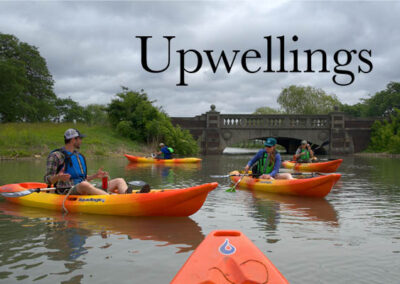National Invasive Species Awareness Week, Part 4: Michigan Sea Grant receives funding to start program for paddlers.
National Invasive Species Week 2018 is Feb. 26 to March 2. Invasive species are plants, animals, and other organisms that are not traditionally found in a given location (in this case the Great Lakes) AND they have a negative impact of some kind, whether ecological, economic, social, and/or a public health threat. To increase awareness of Michigan’s invasive species, Michigan State University Extension and Michigan Sea Grant are publishing a series of articles featuring resources and programs in our state working on invasive species issues.
Today’s article features the “Michigan Invasive Species Paddling Detection, Reporting and Public Awareness Program” a new initiative funded by the Michigan Invasive Species Grant Program.
Fastest-growing outdoor activity
According to recent studies by the Outdoor Industry Association, paddlesports are among the fastest-growing outdoor activities in the United States, and that enthusiasm is reflected in a rapidly developing system of water trails all over Michigan. Along with fantastic recreational opportunities, the increased availability and use of water trails also brings challenges including concerns over the possibility of these activities becoming a more prevalent vector for the introduction or spread of invasive species.
Invasive species can be hitchikers
Many aquatic invasive species (AIS) are spread through movement of boats between impacted areas and non-impacted areas. Much has been done in Michigan to educate motorized boaters on how to prevent the spread of aquatic invasive species by properly cleaning, draining and drying motorized boats. A network of volunteer inspectors also exists for motorized boat launch locations throughout the state. However, less effort has been put into non-motorized boater education and outreach. While some paddlers may encounter these volunteer inspectors, these interactions are serendipitous. This new program will be a targeted education and outreach campaign for paddlers to “adopt” stretches of a water trail to detect and report aquatic invasive species, helping to fill the current void in paddler engagement and helping to prevent the introduction and/or slow the spread of invasive species from recreational paddling activities.
Water trail users are key
The new AIS Paddling Stewardship Program aims to help water trail users identify and map invasive species along sections of at least 12 water trails throughout Michigan. It will also offer education on best practices for preventing the introduction or spread of invasive species through paddlesport activities.
By working directly with paddling groups and other volunteers, and by using proven and established campaigns and tools such as the Clean Boats, Clean Waters program; Clean. Drain. Dry.; Stop Aquatic Hitchhikers!; and the Midwest Invasive Species Information Network (MISIN) smartphone app, we can provide new opportunities to assist in monitoring and reporting the presence of invasive species in areas that may otherwise go unmonitored. In addition, through educational signage, videos and a volunteer-based public awareness program, we can provide greater awareness about how to limit the introduction and spread of invasive species among paddlers as well as non-paddlers.

Program materials, training resources and volunteer tool kits will be developed in 2018 and paddling workshops will be offered beginning in the spring of 2019.
Those interested in enrolling in the 2019 training workshops should send their name and city of residence to Mary Bohling at [email protected] who will notify them when workshops in their area are scheduled.
Read the entire 2018 National Invasive Species Awareness Week series
- Part 1: Learn more about invasive species and what you can do to help fight this problem in Michigan.
- Part 2: What is GLANSIS?
- Part 3: Who’s who in the Great Lakes
- Part 4: Aquatic Invasive Species Paddling Program
- Part 5: Red Swamp Crayfish update


